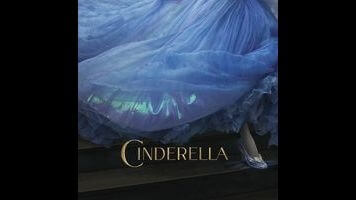Disney’s live-action Cinderella is pretty but empty

Lavish and impersonal, Kenneth Branagh’s Cinderella turns the classic fairytale into a 19th century Ruritanian romance, complete with fictional kingdoms, behind-the-throne intrigues, and a scheming court advisor for a villain. Clothed in a colorful mishmash of historical fashions and scored to sweeping strings, the movie is like an antique cut-crystal vase: gorgeous, fragile, empty. The stepsisters dress like Regency lollipops, the stepmother rocks a high-collar Edwardian get-up in envy green, and Cinderella arrives at the ball in what looks to be the world’s most elegant quinceañera dress; it’s easy to get swept up in the prettiness of it all, and hard to give a damn whether it might end one minute or the next.
Out of all the stories in the European fairytale canon, “Cinderella”—specifically Charles Perrault’s “Cendrillon,” the version with the pumpkins and the glass slipper—is the one that most thoroughly resists anything like a close reading, so it’s hard to fault Branagh and screenwriter Chris Weitz (About A Boy, The Golden Compass) for doing little more with it than expanding one kind of opulent wish-fulfillment fantasy into another. In their version, the Prince (Richard Madden) meets orphaned Ella (Lily James) while out hunting, introduces himself as a commoner who happens to work in the royal palace, and stages the big ball in order to learn her identity. If he can’t find his mystery dream girl, the Prince will have to marry one of the exotic princesses he’s been promised to by the Grand Duke (Stellan Skarsgård), who’s more interested in forging alliances for their tiny, culturally un-specific kingdom than in matters of the fairytale heart.
Putting Cinderella and the Prince on a more or less equal footing is about as far as one could go without seriously subverting the material; however, this being a Disney live-action update of an animated property, the mutual deception angle does little more than set up a birthday-matinee-ready lesson about being true to yourself. Beyond that, this is “Cinderella” as kids and ex-kids have heard it a hundred times over: the girl who is treated like a servant by her stepmother (Cate Blanchett) gets to go to the ball with the help of her Fairy Godmother (Helena Bonham Carter, a jolt of kooky energy in an otherwise sleepy movie), and leaves behind a marvelous looking glass slipper that will only fit her foot.
Shot in a stately widescreen that has none of the eccentric flourishes of Branagh’s other director-for-hire work, but is very good for presenting sets and full-length dresses, Cinderella is essentially a portfolio-style showcase for the work of Dante Ferretti and Sandy Powell, Martin Scorsese’s regular production designer and costumer, respectively. It’s packed with ornate chandeliers and candelabras, brocaded hussar jackets, lacquered folding screens, garishly upholstered fainting couches, and shimmering fabrics. There is so much color and texture, and yet—unlike the duo’s work with Scorsese or their fruitful first collaboration, on Neil Jordan’s Interview With The Vampire—it never tantalizes. Without a unifying vision, it’s just stuff.